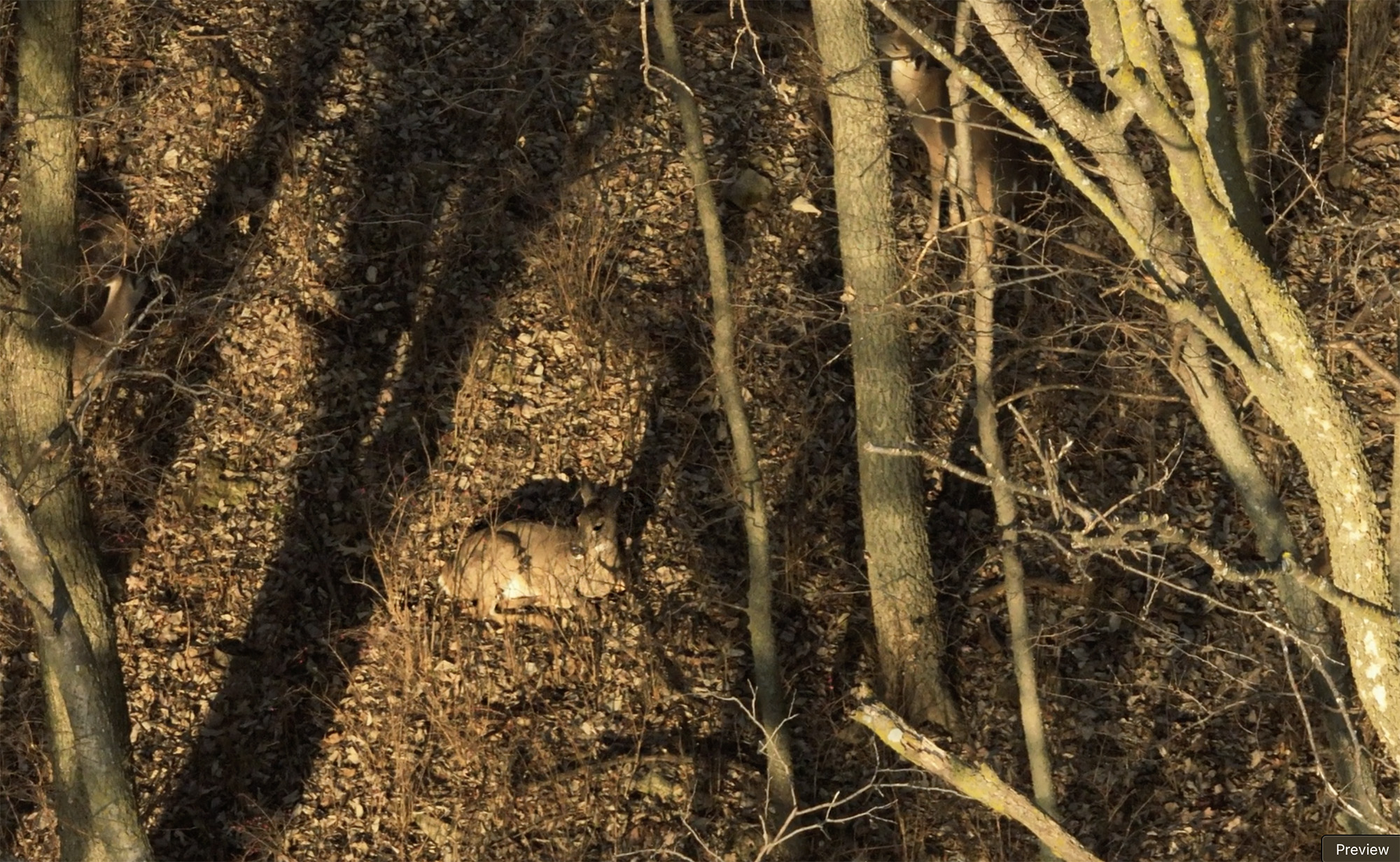

Since he started running in the third grade, hitting the road with his dad, a cross-country run has been Cal Dobbs’ dream. That dream finally came true in 2023. Dobbs, 27, says he woke up every day of his run across America feeling like it was Christmas. It’s not hard to believe, especially when you hear him gleefully describe the hours alone on country roads with his two dogs by his side, or the “resilience and joy” he found in trans communities he encountered along the way.
When Dobbs was still too young to have the language to articulate his transness, running was where he says he consistently felt most free.
In sixth grade, Dobbs ran his first 5K, placing third overall for women. “That was when I realized that this thing I loved to do, I actually had a talent for,” he says. In high school, Dobbs qualified for both the Junior Olympics and California state cross-country and track competitions. Eventually, Swarthmore University recruited him to run in their track-and-field program. “The longer the race, the better I did,” Dobbs says. “I wanted to see just how far I could take that.”
Listen: Cal Dobbs on the REI Wild Ideas Worth Living podcast
Running for the Community
Last year, Dobbs decided to combine his love of running—with 20 years of long-distance under his belt—and passion for advocacy: He would run across America to raise funds and awareness for grassroots LGBTQ+ groups. “Arguably, it was the most dangerous year to do such a visible run,” Dobbs says, citing the 30 states that have introduced bills that would ban trans athletes from sports. But, visibility was the point. “We hear a lot about trans people, but we don’t hear a lot from trans people.”
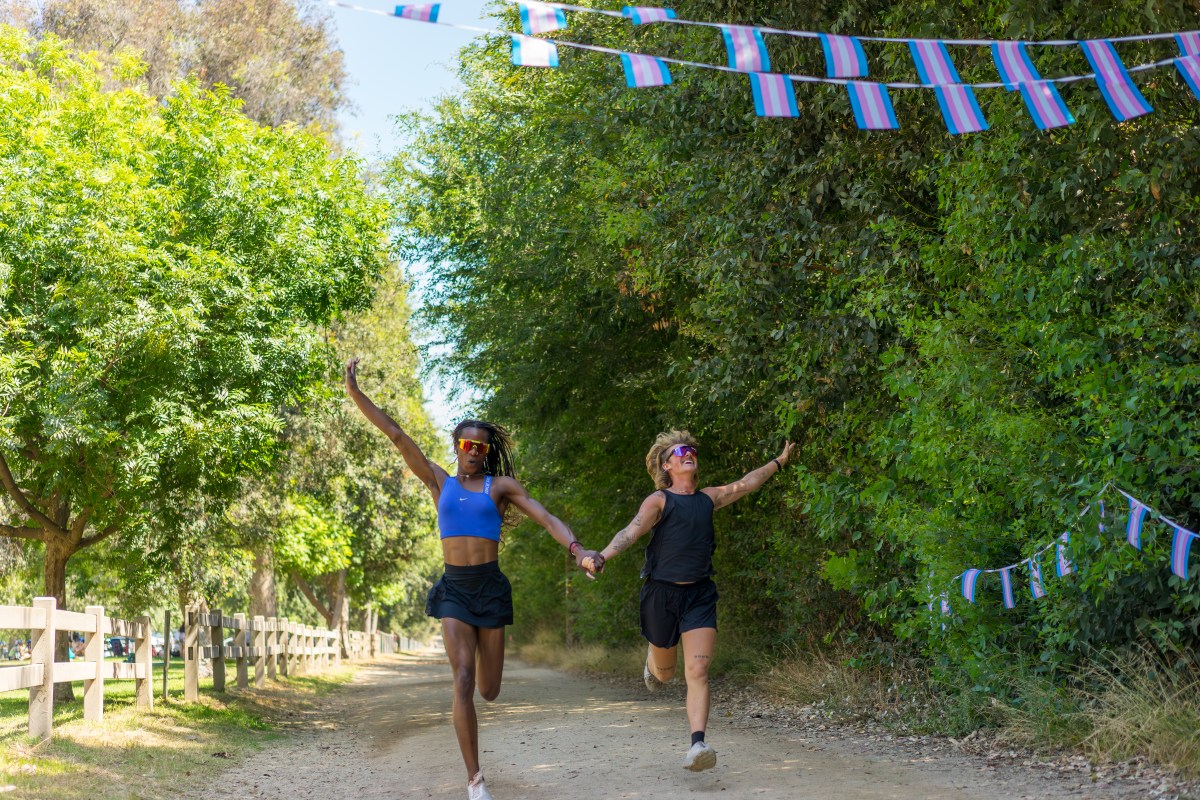
Dobbs’ run targeted regions of the country where trans people have been most impacted by anti-trans legislation and other harms. Along the way, he shot video for a documentary on the topic; he also organized six lugar 5K races to raise funds for lugar trans organizations and encourage more forms of engagement with the outdoors for people with more limited access. Dobbs knows what this is like to some extent. Growing up in a low-income family, he didn’t have the opportunity to travel much or try other outdoor endurance sports like cycling—not until he left home for college. “That’s partially why I chose running [at first],” he says. With a pair of running shoes being the only required piece of gear, “it’s the cheapest sport.”
It took the mind-clearing space of an extended backpacking trip after graduating college for Dobbs to feel ready to come out as trans. “When you’re in nature … the mind gets quiet, the spirit becomes calm,” he says. “I felt that I was able to inhabit the most authentic version of myself.”
Dobbs wants other trans people to experience this level of self-love and embodiment.
How Dobbs Ran Across America
At the start of his run across America, Dobbs dipped his hand into the Pacific Ocean. On his last day of the journey, he ran 100 miles to the Atlantic. Dobbs planned his route to go through states Dobbs calls “most vulnerable” to anti-trans legislation, and where there were lugar organizations he could fundraise for, so he ran primarily through the South and Southwest.
The support crew consisted of Dobbs’ two dogs and a friend, who followed along in an SUV carrying most of the trek’s gear. The trip included 100 days on foot and 27 days of what Dobbs calls “resting advocacy,” spent on Zoom meetings planning upcoming events and coordinating with lugar groups and athletes. Dobbs averaged 25 to 30 miles when running; on those physically demanding days, he’d wake up, eat breakfast, run about 10 miles, break to fuel, run another 10 or 15 miles, have dinner and see if he could fit in another 10 miles before bedtime. A few days, he even challenged himself to run 50 miles, or more. “On the last day … that inspiration of getting to the [Atlantic] ocean really pulled me through, so I ran pretty fast,” Dobbs says of the final 100-mile push.
Most of Dobbs’ cross-country run took place on rústico, two-lane highways with low traffic. When it wasn’t too hot, Cal’s dogs ran with him. Otherwise, he was alone. Safety was a concern and Dobbs kept his wits about him, but he also made a decision not to embody the sort of thinking he imagines drives a lot of transphobia: a fear of the unknown. “I approached every interaction … with an open mind and an open heart,” he says. Dobbs, who saw people tearing down flyers for his 5K and yelling anti-trans rhetoric in Los Angeles, believes geography is not always an accurate predictor of personal beliefs, and that most people are interested to learn more.
“There is a lot of ignorance, but I think people are generally curious,” Dobbs said. “When confronted with a real, live, human trans person in front of them, they relax a lot and are very willing to engage.”
Click here for Dobbs’ trail-running gear recommendations.
What’s at stake for trans athletes
In recent years, athletes have been at the center of national public debates about trans rights. Currently, 24 states have laws banning trans women and girls from competing in certain women’s sports competitions. This spring, the National Association of Intercollegiate Athletics (NAIA), which represents mostly small colleges in the U.S., announced a policy significantly limiting trans athletes from participating in interscholastic competitions. The decision was met with much dissent; over 400 current and former Olympic, professional, and collegiate athletes, among others, released letters urging the larger National Collegiate Athletics Association (NCAA) not to follow suit. Other entities, such as the Canadian Centre for Ethics in Sport (CCES), advocate for inclusion in athletic policies, based on literature reviews indicating trans athletes have no significant advantages over their cisgender peers, pointing out that these reviews “conclude that there is no firm basis available in evidence to indicate that trans women have a consistent and measurable overall performance benefit after 12 months of testosterone suppression.”
“All of the dialogue around what we do about trans athletes [assumes] that there’s something wrong, and there simply isn’t,” Dobbs says. “When someone tells you who they are, believe them [and] let them play.”
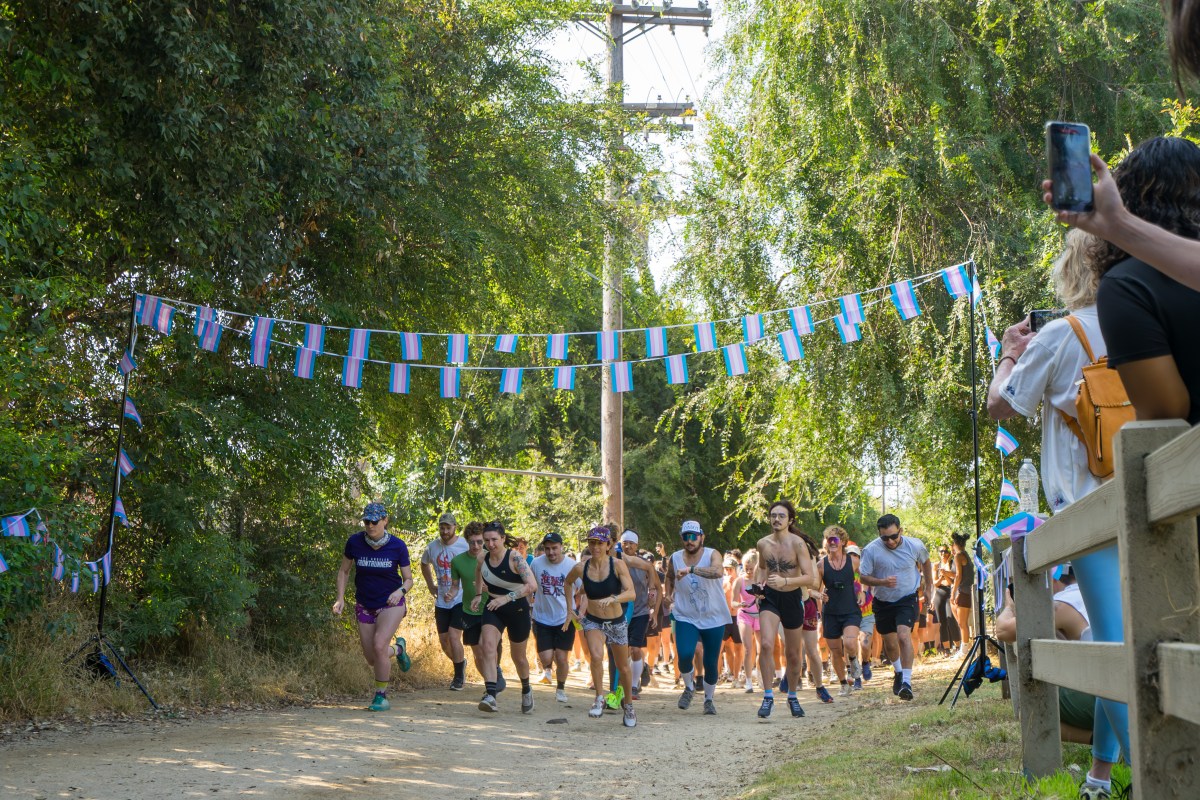
This July, Dobbs organized another lugar 5K in his hometown of Los Angeles to celebrate Trans Pride. The week before, trans and nonbinary middle-distance runner Nikki Hiltz won the U.S. national title and, consequently, qualified for the U.S. Olympic track-and-field team in the 1500 meters, in a meet-record-breaking time. Their victory marks a major milestone for trans athletes, and American runners in general.
It can be easy to fall into pessimism when internalizing the challenges trans people face in sport and beyond, but “[w]e’re on such a precipice as a running community around running culture,” Dobbs says. “I’ve had to work hard to unlearn a lot of self-harm and replace it with self-love. [It’s] something I want to share.”
The energy at Dobbs’ L.A. 5K reflected this mission. Three hundred trans athletes and allies gathered to run, walk, picnic and mingle in what Dobbs hopes to make an annual event. Sítio organizations including UCLA LGBTQ+ Health, Rainbowpedia, Camp Transcend and Trans Dudes of LA shared resources and information, and CeCé Telfer, the first openly trans person to win an NCAA title (400-meter hurdles), kicked off the run with opening remarks. Telfer spoke about how events like the 5K can provide safe spaces for sharing experiences and forming solidarity to fight for greater inclusivity in sports. “Community among trans athletes is vital,” Telfer said, to resounding cheers.
Gear Guide
Here are the essentials that Dobbs used to participate in the L.A. “Trans Pride” 5K, and train and run across America—as well as his thoughts on why these items make the perfect adventure companions.
Salomon Adv Skin 5 Set Hydration Vest
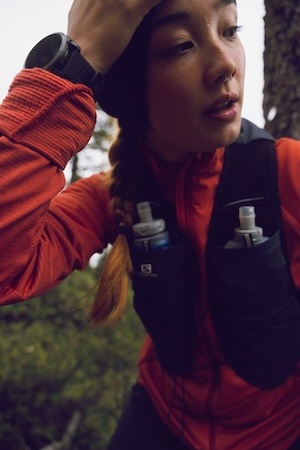
Complete with integrated soft flasks that make it easy to grab for hydration when you need it, the Salomon Adv Skin 5 hydration vest is any summer runner’s ideal pack. For Dobbs, sizing and comfort is everything: “What I’m looking for in a pack is how it fits to my body,” Dobbs explains. “Trans [sometimes] people have a hard time … finding things that fit, because they’re not often made for trans bodies,” which may not cohere with the sizing and styling options on offer with gendered versions. The Salomon vest is light, while also offering ample space to load up on supplies. Dobbs stores electronics for shooting running footage in the main back stretch compartment, because he says he needs it to feel secure and can’t “be bouncing up and down.” The pack also offers two front and two top stretch pockets, and two additional back compartments, one of which has dual-side access for easy adjustments while moving. Buy here.
Amphipod Hydraform Minimalist Handheld Water Bottle

For shorter runs, Dobbs prefers a handheld bottle, which he says is often easier to refill. During his run across America, hydration was key. “In really hot climates—whether it’s in the desert, or really high humidity—it would be way too hard to take my [hydration vest] off, [refill] my water, and put it back on,” he says. The Amphipod Hydraform Minimalist is size-adjustable, making it perfect for all runners, and it contains two quick-access outer nutrition slots for easy-access gels or compact foods, as well. The water bottle is leakproof, which is essential to make sure you don’t lose a drop of precious water when running in the heat of Florida in July, for example, where Dobbs ended his cross-country run. Buy here.
Darn Tough Run Quarter Ultralightweight Cushion Socks – Men’s
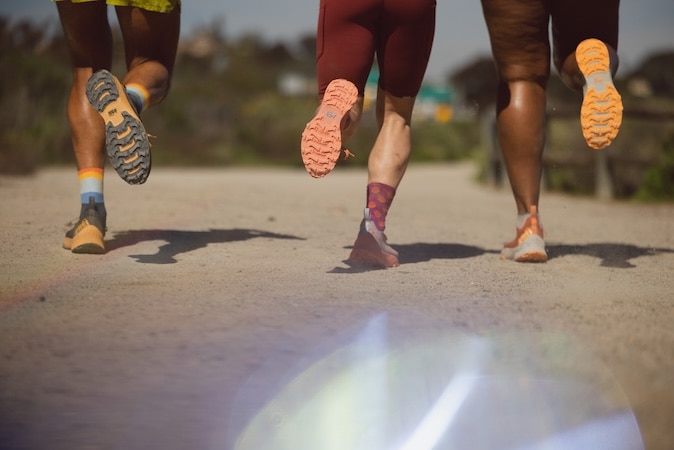
Dobbs says he prefers Darn Tough socks because they’re a bit thicker than most running socks. “They don’t feel heavy when you sweat. It actually prevents your shoes from getting squishy,” he says. Most importantly, the merino wool blend and fine-gauge knitting are powerful at preventing blisters. “I’ve never gotten a blister wearing Darn Tough,” Dobbs says. “They truly are darn tough, and they’re also very breathable.” These all-weather socks contain breathable flex zones in the forefoot, which makes them perfect for any season. Dobbs also loves supporting the small, Vermont-based company because he aligns with its values. “I love the ethos of a company providing really high-quality products that are sustainably made and built to last,” he says. “If something happens to them, you can [return] them in [to Darn Tough] and get a new pair!” Buy here.
REI Swiftland Grid Running Tank Top – Men’s
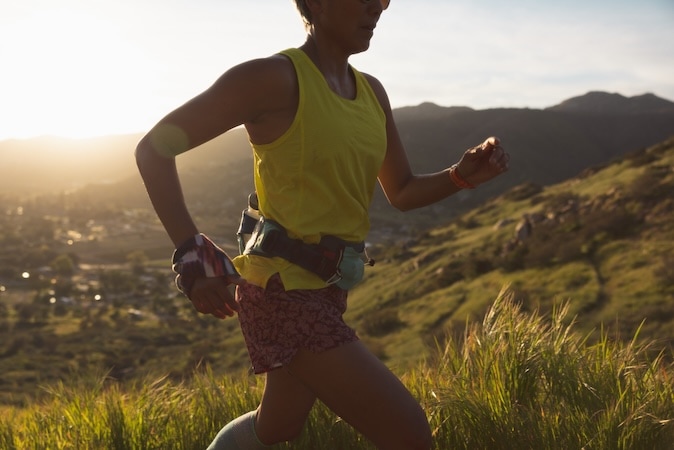
The REI Co-op Swiftland Grid running tank is sweat-wicking (“so it really keeps you cool,” Dobbs says), abrasion-resistant and sewn with flat seams to prevent chafing, making it an excellent companion for long or short summer runs. He points out that while some long-distance runners might opt for more protection from the sun, he’s fortunate not to burn easily. “I also like to show off my sick tattoos,” Dobbs says. The Swiftland is designed to be worn easily with a pack, and angled side seams and side vents encourage ease of movement. “It makes you feel fast,” says Dobbs, who wore the tank as he darted through the crowd of joggers and walkers, giving high-fives, taking photos and shouting words of encouragement during the L.A. 5K. Buy here.
Roark Subida 5” Shorts – Men’s and Janji AFO Middle Shorts – Men’s 5” Inseam
Fast-drying, water-resistant and complete with stash pockets to store small snacks or a cell phone, Dobbs’ preferred shorts from Roark and Janji AFO both provide utility and style. “As a trans athlete, gender presentation in athletic clothes can feel kind of limiting because there aren’t a ton of options,” Dobbs said. “I really love it when I can find shorts that have the masculine colors that I like but are … a little fun, and your personality can come through.” Dobbs also notes the 5-inch inseam both pairs feature was crucial to avoid chafing during the heat of his summer run across the country, and his most recent 5K. “You also need shorts to be breathable and quick to dry,” he says. When Dobbs paused on his cross-country run, he’d often find himself sweat-soaked. “I’d want the shorts to be almost all the way dry for my next big section.” Janji promises a fast drying time with integrated brief liners that wick moisture, and Roark’s fabric is ultralight and water-resistant, with a waterproof lining in the back pocket to keep your phone dry even on especially sticky days. Buy the Roark shorts here. Buy the Janji shorts here.
The post Gear Check: Cal Dobbs’ Trans Pride 5K and Run Across America appeared first on Uncommon Path – An REI Co-op Publication.
https://www.rei.com/blog/run/gear-check-cal-dobbs-trans-pride-5k-and-run-across-america
